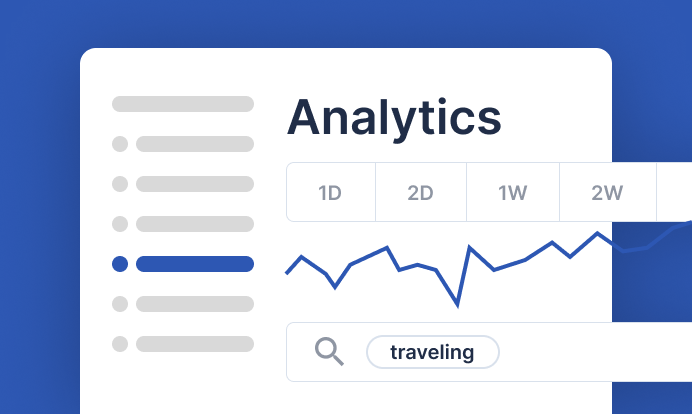As the calendar inches closer to June 2024, an important event is on the horizon—the retirement of Azure Media Services. The countdown has begun, and making a smart choice isn't just advisable; it's crucial.
Join us as we look at the few things you must keep in mind before making the shift.
What to look for in your Azure Media Services alternative
Here are a few things you must keep in mind before narrowing down on a solution before the Azure Media Services retirement.
1. A straight-forward migration process
Often undermined, this is an important thing to consider before you choose your alternative. Focus on finding a platform that makes migrating simple and stress-free. You definitely do not want to get overwhelmed with all the information and break your head over the migration details.
So, look for a service provider that offers comprehensive migration tools, documentation, and support to ensure minimal disruption during the transition. The chosen platform should be able to offer, at the least,
- Detailed guides or tutorials, assisting you in exporting your existing data from Azure and importing it into the new environment.
- Compatibility with common media file formats and codecs used in Azure to minimise the need for extensive file format conversions during migration.
Overall, prioritize a provider that has user-friendly migration tools and ensures that your valuable media assets make the switch to the new platform without any hiccups.
2. VOD and Live Streaming Capabilities
Evaluate the alternative platform's capabilities in supporting Video-on-demand (VOD) and live streaming. Ensure that the chosen solution aligns with your content delivery requirements, offering features for both pre-recorded videos and live broadcasts.
-
For Video on Demand (VOD), check whether the platform provides efficient tools for managing and delivering pre-recorded videos. Look for features such as customizable playlists, easy content organization, and options for monetization if applicable.
- For live streaming, focus on the platform's ability to handle real-time broadcasts seamlessly. Consider factors like low latency, high-quality streaming, and the ease of setting up and managing live events. Ensure that the platform aligns with your livestreaming requirements, whether it involves hosting webinars, live gaming, or any other form of real-time content delivery.
3. Video Player Integration
A crucial aspect of your migration is the integration of a reliable video player. Check if the solution you choose integrates well with industry-standard video players. It should,
- Be compatible with a wide range of video players to ensure flexibility and accessibility for your audience.
Support adaptive streaming, enabling smooth playback across different internet speeds and devices.
- Be able to offer customizable player controls, allowing you to tailor the viewer's interaction based on your content and branding preferences.
- Support advanced features such as closed captions, subtitles, and multi-language support.
4. Cost Effectiveness
Cost considerations play a pivotal role in selecting your Azure Media Services alternative. Compare pricing structures to ensure that the solution you choose offers a cost-effective solution tailored to your specific needs.
- For instance, a platform that includes adaptive bitrate encoding at no additional cost can result in significant savings, especially if your content demands high-quality streaming.
- Factor in the total cost of ownership, considering not only the initial migration but also the ongoing expenses associated with hosting, transcoding, and delivering your media content.
- Check for transparent pricing models, avoiding hidden fees that might escalate costs unexpectedly.
3 reasons why api.video could be an ideal choice as an Azure Media Services alternative
Let us look at a few convincing reasons to migrate to api.video.
1. Cost-efficiency
Let's compare the encoding costs for 10,000 minutes of video at 4K resolution.
Azure demands $600 for this task, as revealed by the Azure Pricing Calculator.
On the other hand, api.video takes zero cost to encode your videos. This is because encoding is completely free with api.video, whether it is 10,000 minutes of video or 20,000; 480p resolution or 4K.
2. Expedited ingestion speeds with api.video
You will notice a substantial boost in ingestion speed when comparing the upload and transcoding of an 18.7Mb file on both platforms.
Azure takes 1 minute and 13 seconds for transcoding alone, while api.video accomplishes the entire job in just 30 seconds.
3. Easy-to-follow documentation
Navigating the intricacies of uploading, encoding, and transcoding videos on Azure can be a complex and tedious process. In contrast, api.video has an intuitive interface and documentation that is not only easy to comprehend but also quick to execute. Explore the following links to witness the simplicity for yourself:
Moreover, the migration of content from Azure Media Services to api.video is extremely easy and can be done either through their import tool or using your own script.
The best part?
Migration with api.video comes at zero cost.
To conclude, finding an alternate to Azure is also about finding a seamless transition that aligns with your needs and pushes your content delivery forward. Time is of the essence—act before the final chime in June.
If you have any questions regarding the migration to api.video, book a call with us — we are here to help you. You can also go to our comparison page for more information or sign-up for a free sandbox account to test us out for free.




